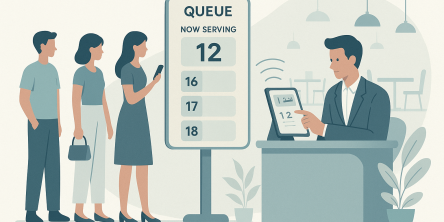The Secret to Smarter Customer Surveys: AI and Predictive Analytics

AI surveys are modern customer surveys that use artificial intelligence to simplify and automate every stage of the survey lifecycle. From building questionnaires to analyzing results, AI surveys make it faster and easier to collect and interpret customer feedback.
Contrary to traditional survey tools where everything is done manually, AI surveys use smart automation to help you design smarter customer surveys. All you have to do is define your survey objectives, and the AI will suggest the most relevant questions, ideal formats, and personalization techniques. In short, AI surveys help you move from just collecting feedback to effortlessly analyzing insights.
Different Aspects of Smarter Customer Surveys
Here are different aspects of smart AI customer surveys:
1. Personalized surveys
One of the most powerful features of AI surveys is the ability to create personalized questionnaires. Instead of using generic questions, you can use smarter survey tools and define your goals. That’s it, AI will build a relevant and dynamic questionnaire that matches your needs.
Want to know what is even better? AI eliminates unintentional bias in your questions by maintaining a neutral tone and language, allowing customers to respond openly and honestly. The tool can also recommend optimal survey length to prevent fatigue and boost completion rates.
These surveys can include advanced features such as display logic, multilingual support, embedded customer data, redirection links, and more. And can you guess the result? Yes, it leads to a seamless survey experience for your customers and detailed insights for your business.
2. Get real-time alerts
Smarter customer surveys keep you updated instantly. How? AI surveys enable real-time alert systems that notify you instantly when specific events occur—such as a customer submitting a low rating, skipping key questions, or completing a survey.
You can set up these alerts based on your unique priorities. For instance, if NPS drops below a certain score, or if negative keywords are detected in a response, your team can be notified right away via email, Slack, or your CRM.
This live monitoring helps you act fast, especially in high-impact scenarios like low NPS/CSAT scores or negative sentiment responses. It ensures you never miss out on urgent feedback that needs immediate attention.
3. Segment your customers
Smart customer surveys make it easy to segment customers based on real-time data and feedback. With AI survey tools, segmentation happens automatically and easily, which saves you time and gives you a more structured view of your customer base.
AI can group customers by various dimensions such as age, gender, location, spending habits, engagement history, previous feedback scores, product preferences, and more. You can also create behavioral segments like “first-time users,” “repeat buyers,” or “detractors who became promoters.”
These segments are dynamic, meaning they update continuously as new survey data comes in. With the help of this data, you can create hyper-targeted campaigns, personalize follow-ups, and personalize your messaging for maximum impact.
4. AI sentiment analysis
Collecting feedback is one part of the process, but understanding it is another important part. AI sentiment analysis allows you to go deeper than numerical ratings. When customers leave open-ended feedback, AI scans the responses using natural language processing to detect sentiment, emotion, intent, and commonly mentioned topics.
Let’s say a customer writes, “The waiting time was terrible and the front desk staff were rude.” AI identifies this as a negative sentiment, highlights “long wait times” and “rude front desk staff” as key issues, and automatically groups similar responses.
This eliminates the need to manually go through thousands of text entries. With AI sentiment analysis, patterns emerge clearly, making it easier to detect growing concerns, praise-worthy behaviors, or recurring themes. These insights are presented in dashboards where you can view emotion breakdowns, word clouds, theme clusters, and more.
5. Advanced case management
You can integrate smarter customer surveys with advanced case management features. If a customer selects a score of 0 on an NPS question or mentions a service issue in their feedback, the system can automatically create a case ticket and assign it to the relevant department.
These cases are tracked in a centralized dashboard where teams can see all customer complaints or concerns, their status, and any actions taken. AI can also assist in drafting initial responses using predefined templates, saving your team valuable time.
You can choose to integrate the system with other tools like CRM platforms, email automation systems, or even a voucher management tool. Therefore, if needed, goodwill gestures like discounts or coupons can be issued directly to your customers.
This streamlined process ensures that no feedback is left in the dark. It also helps you close the feedback loop by acknowledging the customer’s concern, addressing it, and letting them know the resolution. All this happens without delays or manual intervention.
6. Map customer journeys
Every customer takes a different path while interacting with your brand. AI surveys help you visualize and analyze these journeys in detail. By gathering and connecting feedback across multiple stages, such as onboarding, usage, support, billing, and post-purchase, AI maps the full customer experience.
You can pinpoint key touchpoints that lead to satisfaction or friction. For example, AI might reveal that customers who interacted with your chat support team during checkout had a smoother journey and higher satisfaction scores. On the flip side, it may show a recurring drop in sentiment after delivery delays.
Journey mapping also helps identify drop-off points and bottlenecks, allowing you to design smoother, more intuitive experiences. Instead of assuming what your customers go through, you get clarity on their actual journey, based on real data.
7. Predictive analytics
One of the most valuable features of AI surveys is predictive analytics. AI can help you forecast what’s likely to happen next. It uses existing customer survey data, behavioral patterns, purchase history, and engagement levels to anticipate future outcomes.
For example, if a customer who once gave high ratings starts giving lower scores and is less responsive, predictive analytics can flag them as a potential churn risk. Based on trends across customer segments, the system can estimate overall retention rates, satisfaction trends, likelihood to upsell, and more.
This approach gives your team the time and insight needed to engage at-risk customers, solve issues early, and offer timely support or incentives before problems escalate. Instead of reacting to problems after they happen, predictive analytics helps you stay one step ahead.
Wrapping up
As you can see, there are different aspects and numerous benefits of AI surveys. From creating personalized, unbiased questionnaires to predicting future behaviors and managing responses in real time, AI surveys are built to deliver both speed and depth. All you have to do is use a reliable survey tool, and AI will automatically create surveys.
Similar Articles
The modern age of customers expect constant availability, no matter what the offer. And for that, the market requires rapid innovation cycles. In such a high stakes environment, technology infrastructure is more than just a cost center.
When evidence seals fail, cases weaken. Explore how compromised chain of custody can derail investigations and jeopardize justice.
Compare hydraulic and traction residential elevators to find the best fit for your home. Learn how each system works, their pros and cons, space needs, energy use, and maintenance requirements.
Extend the lifespan of your commercial marina docks with proactive maintenance. Learn essential inspection routines, material-specific care, and safety tips to protect your investment and ensure long-term dock performance.
Learn the key factors in designing an engineered fall protection system. Discover how hierarchy of controls, task analysis, structural integrity, and fall clearance ensure safety and compliance.
Today, modern businesses face constant pressure to operate with maximum efficiency. This requires a technology infrastructure that is both agile and robust. However, the traditional model of on-premises data centers often has significant limitations. These legacy systems can drain valuable resources from teams.
When people are hungry, standing in line for a table feels tiring and unpleasant. In fact, research shows that most individuals will just walk away if they have to wait longer. They will go and find another place to eat.
In the early stages of designing new community centers, fire stations and administration buildings, city planners and architects are forced to make a crucial decision: What building material is best suited for providing the most value, safety and longevity to the public?
Amazon Simple Queue Service (SQS), Simple Notification Service (SNS), and EventBridge are just a few of the messaging services that AWS provides to meet various demands when it comes to creating scalable and effective cloud systems.









